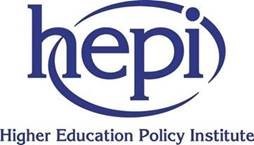Postcodes or personal experience? Widening participation
Back
This blog was initially published on the HEPI website here.
As every reader of this blog almost certainly knows, access to higher education, particularly to the more selective universities and the most popular courses, remains one of the greatest areas of inequality in the United Kingdom.
In 2001, Prime Minister Tony Blair famously declared, ‘education, education, education’ to be the key to raising aspirations and bringing about societal change. His government set a goal of 50 per cent of young people, aged 17 to 30, entering university by 2010.
While Government data in 2019 confirmed that this had been achieved, the progression rate by the age of 19 is 44.4 per cent and in some groups, the percentages remain very low. For those who receive free school meals, the progression rate is 28.1 per cent.
This year, the Tony Blair Institute for Global Change called for the overall percentage to rise to 70 per cent by 2040. Its report states that this would bring us in alignment with other high-innovation economies such as Japan and Canada, where more than two thirds are now entering higher education.
The argument for this new target is compelling, and is rapidly gaining traction, but it poses a major challenge for universities, as meeting it will require us reaching applicants from groups that have hitherto not been entering university in significant numbers. A key question is how to identify these potential students.
The national widening participation agenda established by the 1997 Dearing Report is currently primarily driven by the Office for Students’ targets which use area-based measures of participation that are based on postcodes. Statistics are elicited by POLAR quintiles (participation of local areas – calculated by dividing the number of young people from each area who enter higher education aged 18 or 19 by the young population of that area) and the new ‘enhanced’ area-based measure, TUNDRA (tracking underrepresentation by area), which involves tracking children’s educational progress in mainstream, state-funded schools.
However, as Vikki Boliver et al argued recently in the British Journal of Sociology of Education, area-based measures suffer from problems of both reliability and validity, creating unacceptably high rates of both false positives and false negatives at the level of the individual. An applicant’s postcode does not reveal their parental household income, nor the professional status or educational achievement of the applicant’s parents – all factors that contribute to assessing whether an applicant is socioeconomically disadvantaged. Boliver and colleagues point out that socioeconomic disadvantage is multifaceted and cannot adequately be captured by an area-based metric.
Identifying instead the salience of individual biographical experiences, Boliver et al suggest that other measures, such as the length of time a child receives free school meals, evidence of being brought up in care, and whether they are an asylum seeker or refugee, are more reliable and easily verifiable indicators.
At Sussex, we recruit a significant majority of our home students from the greater south-east of England, and it is striking that 85 per cent of our students who received free school meals did not live in one of the OfS target postcode areas that are taken to signal socioeconomic disadvantage. On this basis, we are in strong agreement with Boliver et al that the OfS should reconsider the efficacy of postcode-based targets in widening participation activities by universities.
Recognising the complexity of socioeconomic disadvantage as experienced at the level of the individual, at Sussex we have developed a number of programmes designed to identify and encourage applications from students from particularly under-represented groups.
For example, children from Gypsy, Roma and Traveller (GRT) backgrounds have the poorest GCSE outcomes of any measured ethnic or cultural group, and they are 11 times less likely to go to university than their peers.Our new GRT programme combines academic research with secondary school activities and outreach. We work closely with GRT community groups both to encourage young people from these communities to consider higher education as an option and to raise awareness of the persistent barriers to education and prejudice against these communities.
It is also our ambition to support more care-experienced young people to study at Sussex. Currently just 13 per cent of care leavers progress to university after school. In 2022 we partnered with First Star UK, a charity that supports the progression to higher education for students from a care experienced background and we were the first university to host a First Star 2U residential summer school in August this year for 30 Year 9 young pupils from across the UK. We have also just announced a scholarship programme, funded by the Rudd Family Foundation, which will provide annual £5,000 bursaries to care-leavers over the next ten years.
Since its inception in 2011, we have also been working with The Brilliant Club. This is an award-winning charity that delivers programmes of university-style teaching to small tutorial groups in schools that serve less advantaged communities. Next year (spring 2023) we will be the first university to pilot a new project with them, Make Your Mark, which will give our undergraduates an opportunity to be employed to provide in-school support learning strategies to Year 10 pupils.
Like many other universities, we make contextual offers to applicants, reducing entry grade requirements in recognition of a range of challenges that may have impacted their education. The criteria include living in POLAR and IMD (indices of multiple deprivation) postcodes, but also whether applicants have been a young carer, or looked after in care themselves. We have encouraged applicants to tell us if they have experienced disruption, such as a period of homelessness, a serious bereavement, or educational disruption due to changing family circumstances or extended absence from school because of ill health. Our approach is based on a decision to not just focus on postcode-related targets but to consider carefully the individual circumstances of all those who apply to Sussex. Since we have developed this work, our contextual offers have risen to 17 per cent of all offers made, and we hope to grow this proportion significantly over time.
Increasing the number of people engaging in higher education is vital to the future of our economy and society, but this expansion must reach all those who can benefit from going to university. We will not find all those from disadvantaged and under-represented groups if we focus exclusively, or even primarily, on postcodes rather than personal experience of disadvantage. It is, therefore, very good news that UCAS applications will henceforth include questions that allow students to identify themselves as a refugee or asylum seeker, as having caring and parenting responsibilities, as being from a UK Armed Forces family or a former member of the Armed Forces, as well as having been in receipt of free school meals. It’s now up to universities to make good use of this new information about our applicants.
Prof Sasha Roseneil is Vice-Chancellor of the University of Sussex.


